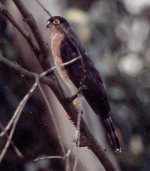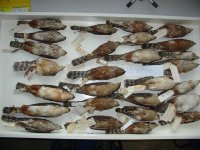Dave B Smith
Well-known member
Attached is a photo that I took some time ago of a raptor that I have not been able to ID. Photo was taken in Bogota, Colombia (elevation 9,600 feet) in a Eucalyptus tree outside of my apartment window (7th floor). I had seen him several times and he always gave the other birds a real fright so I think it may be an accipiter.
Any help in ID'ing it would be appreciated.
Thanks,
Any help in ID'ing it would be appreciated.
Thanks,





